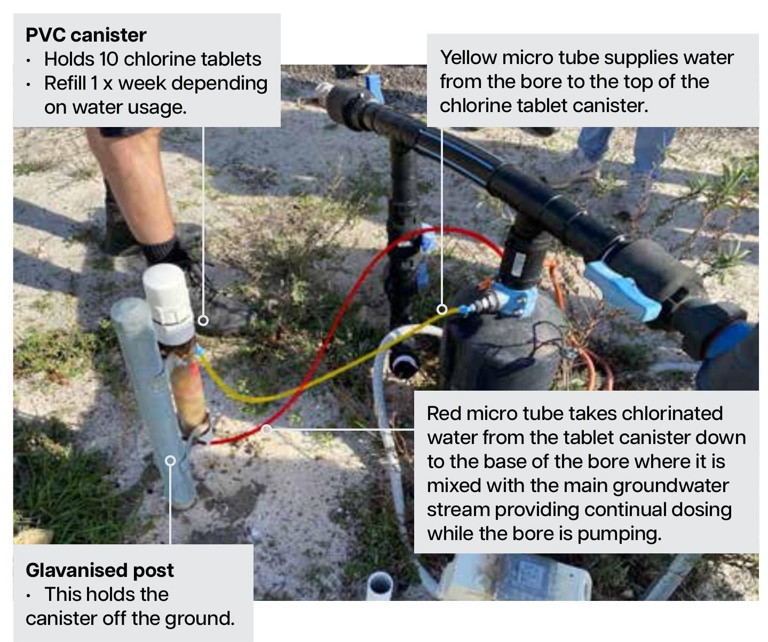irrigation
DIY WINNER
Do you use chlorine dosing to manage bacterial iron in a bore? Here’s a simple, homemade system that makes light work of this hard task.
Words Helen Newman, APC IDO (berries)
MANY growers are challenged by the build up of brown sludge in irrigation systems caused by iron bacteria. Ben Funnekotter, of The Seedling Factory, showed us how he controls iron bacteria in his contaminated bores during a recent tour of his operations.
His homemade system provides continual chlorine treatment to the bore (which kills the bacteria) using a simple Venturi set-up that draws water through a canister containing chlorine tablets.
The benefit is there is no power needed. All you need to do is a weekly top-up of chlorine tablets.
How does it work? When the bore is pumping, part of the outgoing water is diverted through a tube (yellow) that delivers water to the top of the canister containing chlorine tablets. The water percolates through the chlorine tablets, then is led by a tube (red) from the bottom of the canister to the very bottom of the bore where the chlorinated water is recirculated with the main ground water stream before it’s pumped to the surface (see image above).
So what exactly is iron bacteria? These are micro-organisms that occur naturally in soil, surface water and shallow groundwater. While most bacteria get their energy from decomposing organic matter, iron bacteria derive theirs from oxidising dissolved ferrous iron or manganese in groundwater. Gallionella spp. and lepothrix spp. are the two common bacterial species involved in iron and manganese oxidation.
Although a small population of iron bacteria can naturally occur in groundwater, they typically exist in abundance above ground. The most common way for these organisms to enter wells is when the bacteria enter from the ground surface during well drilling, submersible pump installation or any other construction, maintenance or well servicing. Good hygiene practices when drilling and maintaining a bore can help keep the water source free from bacteria.
Thank you to Ben Funnekotter of The Seedling Factory for sharing this system design. This article has been produced as part of the Hort Innovation project ‘MT22010 Facilitating the Development of the Australian Berry Industries’.
Iron Bacterial Treatment System

Photography Helen Newman and Patrick Ruohy